We may earn money or products from the companies mentioned in this post.
Would you love to have fresh vegetables available to you throughout the year? Reaping garden harvests isn’t only for the summer. You can extend your growing season into spring and fall with certain cold-weather crops that thrive in the cooler months. While I am only going in-depth with 8 different crops today, please remember there are other vegetables to consider when planting.
As you prepare your garden for spring, let’s take a deeper dive into these vegetables and what they will need to thrive so that you may extend your growing season with success.
1. Broccoli
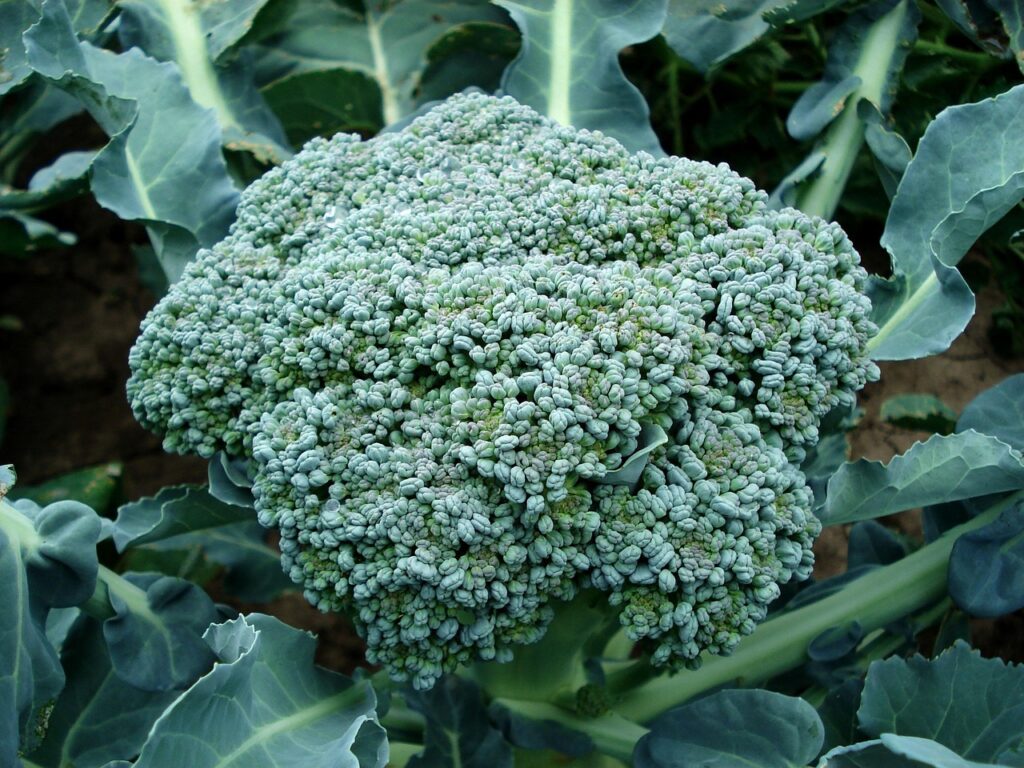
Ideal Growing Conditions
- In order to thrive, broccoli plants need
- Well-drained soil
- Soil pH between 6.0-6.5
- At least six hours of sun.
- Ideal growing temperature is from 65 to 75 degrees F.
When to Plant
- Purchasing Plants
- If you buy plants from a greenhouse or nursery in the spring, you can set the plants out around two weeks before the last frost.
- If you buy plants for fall harvesting, you need to plant them in midsummer with 85 to 100 days before your first fall frost.
- From seed
- Always, read on your seed packets for exact information of when to start and sow your seeds. This may differ based on each variety.
- For spring harvest,
- Broccoli seeds should be started indoors 7-9 weeks before the last frost or
- Seeds can be sown outdoors 2-3 weeks before the last frost.
- For fall harvest, you should sow seeds 8-10 weeks before your first frost. For most people that will be from mid- to late July.
Planting
- Remember to look at your seed packet to determine the recommended spacing and maturation for your variety.
- Plant broccoli 18-24 inches apart in rows.
- Space rows 3 feet apart.
- Provide plenty of water to the plants so they can become established, and make sure to keep an eye on them and water them more during dry periods.
2. Cabbage
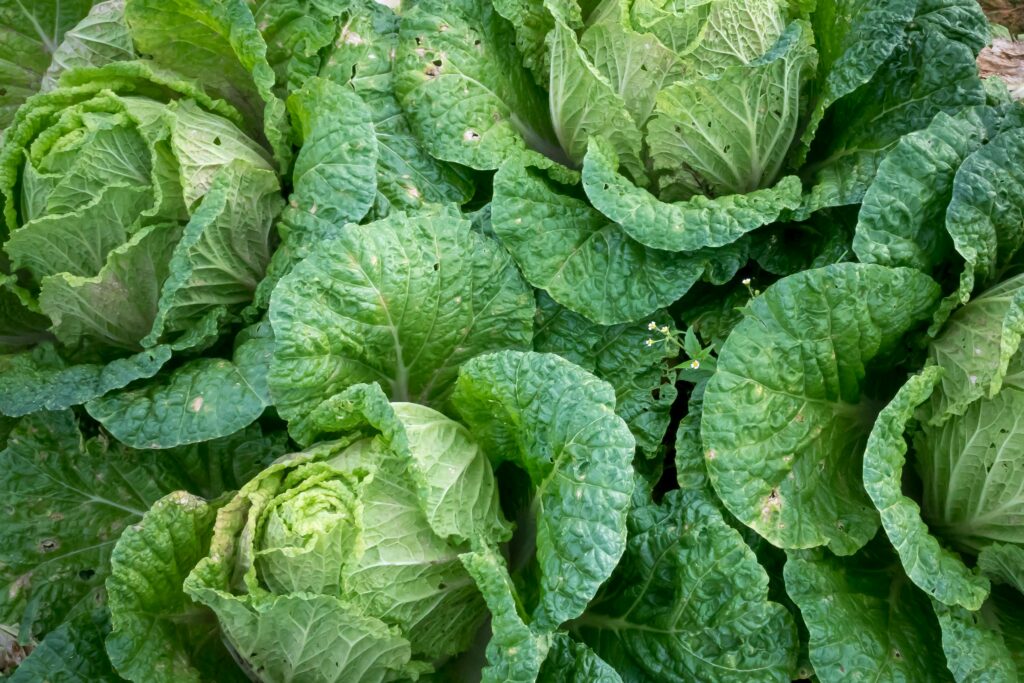
Ideal Growing Conditions
- Well-drained soil
- Soil pH between 6.0-6.8
- At least 6 to 8 hours of sunlight.
- Ideal growing temperatures between 60-75 degrees F.
When to Plant
- Purchasing Plants
- If aiming for a spring harvest, you need to set plants out 2-4 weeks before the last frost.
- If aiming for a fall harvest, set cabbage plants out 6-8 weeks before the first frost which is usually around mid-July.
- From seed
- It is highly recommend that you start seeds indoors for cabbage plants instead of direct sowing in the spring.
- For spring harvest,
- Start cabbage seeds indoors 6-8 weeks prior to the last frost date. After the seedlings emerge and have been hardened off, transplant them to the garden after 4-6 weeks.
- For fall harvest, direct sow seeds outdoors mid-late summer. It can vary between 6 to 12 weeks before your first frost.
- However, if you have an extremely hot and dry summer, hold off until late summer.
- Be mindful that young plants and seedlings may dry out quicker.
Planting
- Remember to look at your seed packet to determine the recommended spacing for your variety.
- Plant seedlings 12 to 24 inches apart in rows with 30 inches between rows.
- Cabbage plants require lots of moisture and regulation of soil temperature for the best growth. Therefore, it is highly recommended to mulch around your cabbage plants.
3. Lettuce
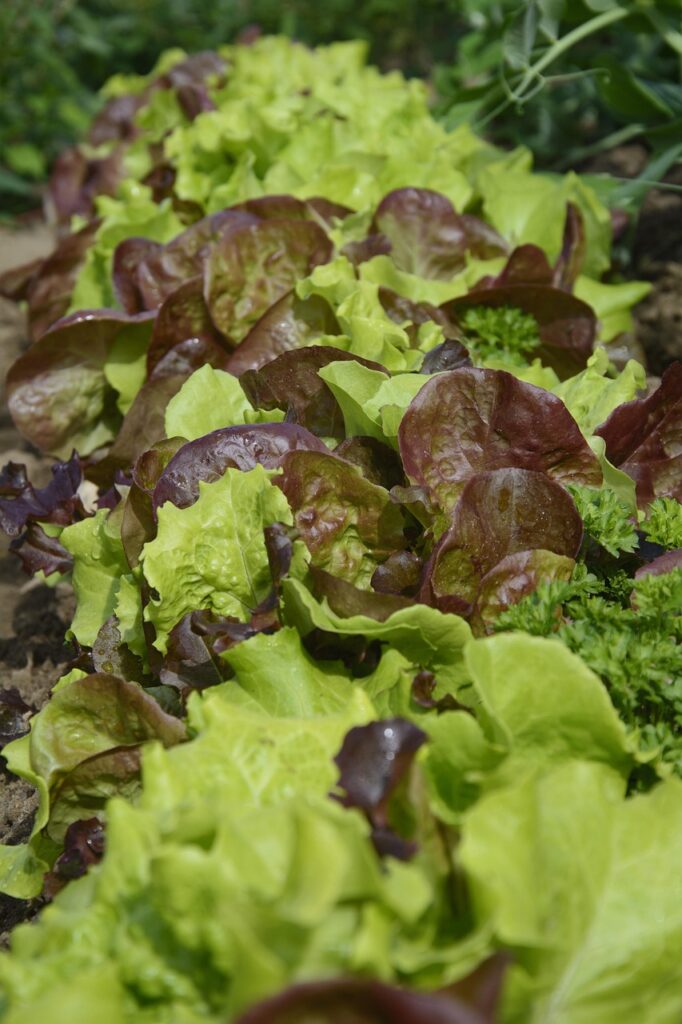
Ideal Growing Conditions
- Well-drained soil
- Soil pH between 6.0-6.5
- Sunlight requirements are from 6 to 8 hours a day. However, some varieties can be grown in light or partial shade for 4 to 6 hours of sun a day.
- Optimum temperature is from 60 to 65 degrees F.
When to Plant
- Purchasing Plants
- In the spring, you can place lettuce plants in the garden 2 to 4 weeks before the last frost or about 2 weeks after.
- From seed
- For spring harvest, you can direct sow seeds 2-4 weeks before your last frost when the ground can be worked.
- If you start seeds indoors, start about a month before your last frost date.
- For fall harvest, you can direct sow seeds 60 days before your first frost. Usually that falls around mid to late August.
- For spring harvest, you can direct sow seeds 2-4 weeks before your last frost when the ground can be worked.
Planting
- Remember to look at your seed packet to determine the recommended spacing for your variety.
- When direct sowing seeds, only plant 1/8 to 1/4 inch deep because lettuce seeds need light to germinate.
- Spacing lettuce plants and seeds depends on variety. Be sure to look at your seed packet.
- Typically head lettuce is set anywhere from 20 to 42 inches apart in rows while leaf lettuce is set 12 to 24 inches apart in rows.
- If you want a continuous harvest throughout the season, sow seeds every 2 weeks.
- Water thoroughly.
- If planting for a fall harvest, cool the soil by covering it with straw and moistening it. It will bring the temperature down by about 10 degrees.
- If you want to extend your growing seasons of lettuce, you may need to use a sunshade in the warmer months and a row cover in colder months.
4. Carrots
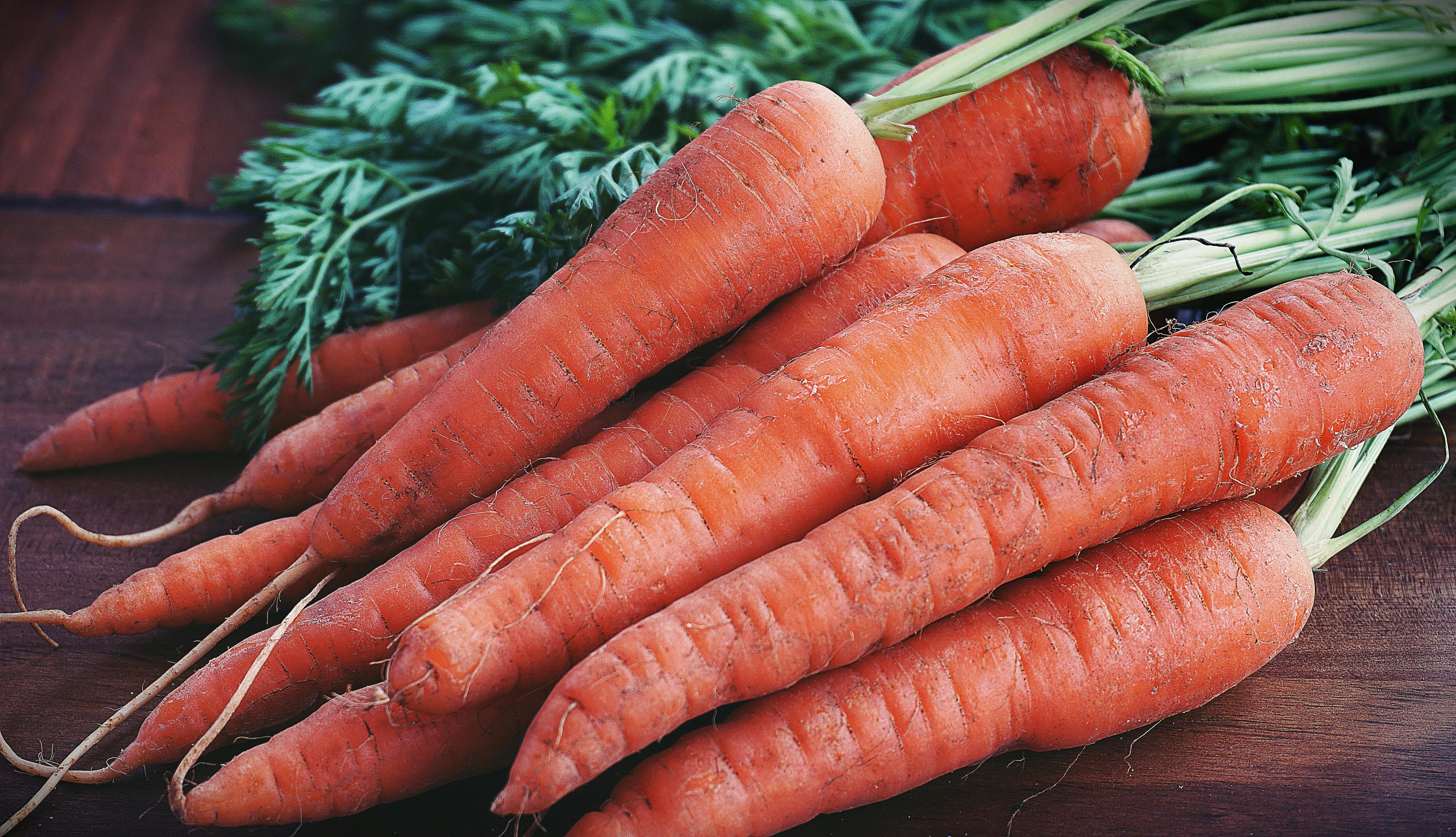
Ideal Growing Conditions
- Well-drained soil
- Soil pH between 6-7
- At least 6 hours of sunlight is needed, but carrots develop better with 8 to 10 hours of sun.
- The ideal temperature is between 55 to 75 degrees F.
When to Plant
- I highly recommend not starting your carrots indoors. They do not transplant well.
- For spring harvest,
- Plant carrot seeds 2-3 weeks before the lasts frost date.
- For fall harvest, sow seeds mid-to-late summer. You need to plant 10-12 weeks before your first projected fall frost.
- Remember, if you have a very hot and dry summer, you will need to wait till late summer or around late July.
Planting
- Remember to look at your seed packet to determine the recommended spacing for your variety.
- Since carrots go deeper into the soil, you need to make sure there aren’t a ton of rocks or stones in your row for carrots.
- Also, it’s best to have loose soil that allows good drainage.
- You can till, but you can also use a broadfork.
- You need to sow around 1/4 inch deep, 1 to 3 inches apart in rows about 6 to 12 inches apart.
- Carrot seeds are tiny. If you have a hard time spacing out the seeds, wait until the seedlings emerge and thin them out.
- One tip is also covering your seeds with sifted compost or garden soil so that it’s light and airy.
- Keep seedlings moist, but do not drench.
5. Peas

Ideal Growing Conditions
- Well-drained soil
- Soil pH between 6-7.5
- Sunlight requirements around 6 to 8 hours a day.
- Optimal temperature is 60 to 75 degrees F.
When to Plant
- Direct-seeding is the best option for peas.
- Spring planting
- As a rule of thumb, you can plant in the spring as soon as the soil is workable.
- Soil temperature needs to be around 45 degrees.
- Most recommend planting peas in ground around 4 to 6 weeks before the last frost.
- As a rule of thumb, you can plant in the spring as soon as the soil is workable.
- Fall Planting
- Sow peas 6 to 8 weeks before your first fall frost date.
Planting
- Remember to check your seed packet for specifics on planting instructions.
- In order to help peas germinate, soak peas 8 to 12 hours overnight before planting.
- Plant peas 1 inch deep and approximately 2 inches apart.
- Some peas may be able to be spaced in rows as little as 7 inches apart or may need up to 18 inches.
- Peas need moderate watering about 1 inch per week.
- To extend your harvest season, plant peas every 2 to 3 weeks.
- Consider soil health, when planting. Peas are nitrogen fixers, and need to be rotated in the garden every year. Tomatoes, peppers, and corn are just a few heavy nitrogen feeders that you can plant in their place.
6. Cauliflower
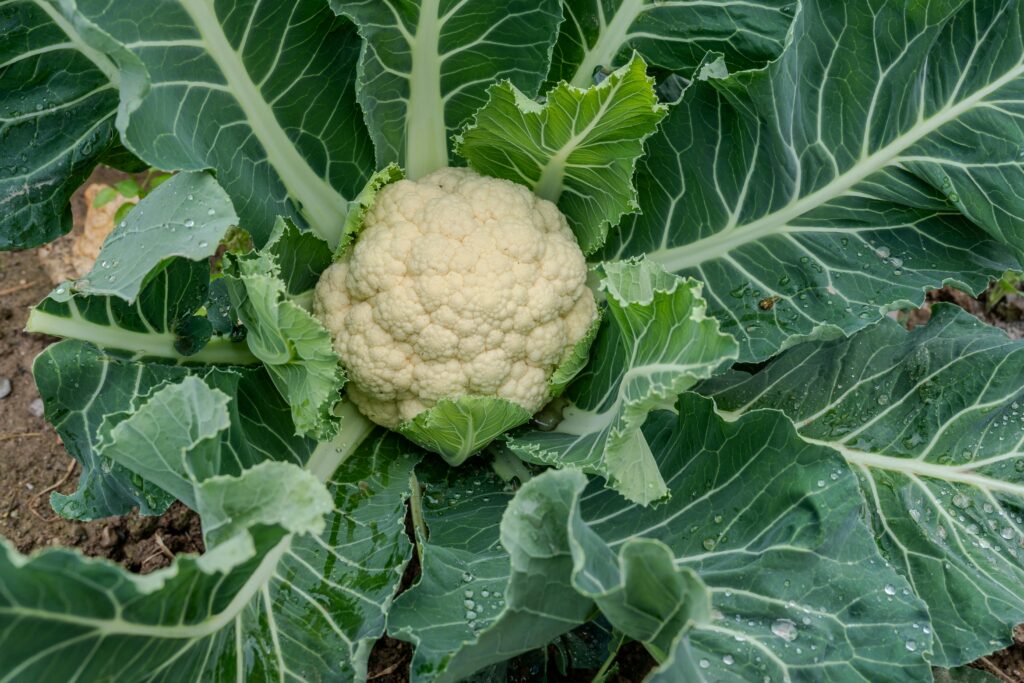
Ideal Growing Conditions
- Well-drained soil
- Soil pH between 6.0-6.8
- At least 6 to 8 hours of sunlight.
- Optimal temperature range is from 60-65 degrees F.
When to plant
- Purchasing Plants
- If aiming for a spring harvest, you need to plant early to mid-April or 2 to 4 weeks before the last spring frost date.
- From seed,
- For spring harvest
- Start seeds indoors 4 to 6 weeks before the last frost date.
- For fall harvest
- You can start seeds indoors or directly sow into the ground 6 to 8 weeks before the first fall frost. This is usually around early to late July.
- For spring harvest
Planting
- Remember to look at your seed packet to determine the recommended spacing and maturation for your variety.
- Set plants or sow seeds at least 24 inches apart in rows at least 30 inches apart.
- If you’re afraid that some of your seeds won’t emerge, sow seeds 18 inches apart and thin seedlings later.
- Keep the plant moist. Do not let it dry out.
- Mulching around your cabbage will help it retain moisture.
7. Beets
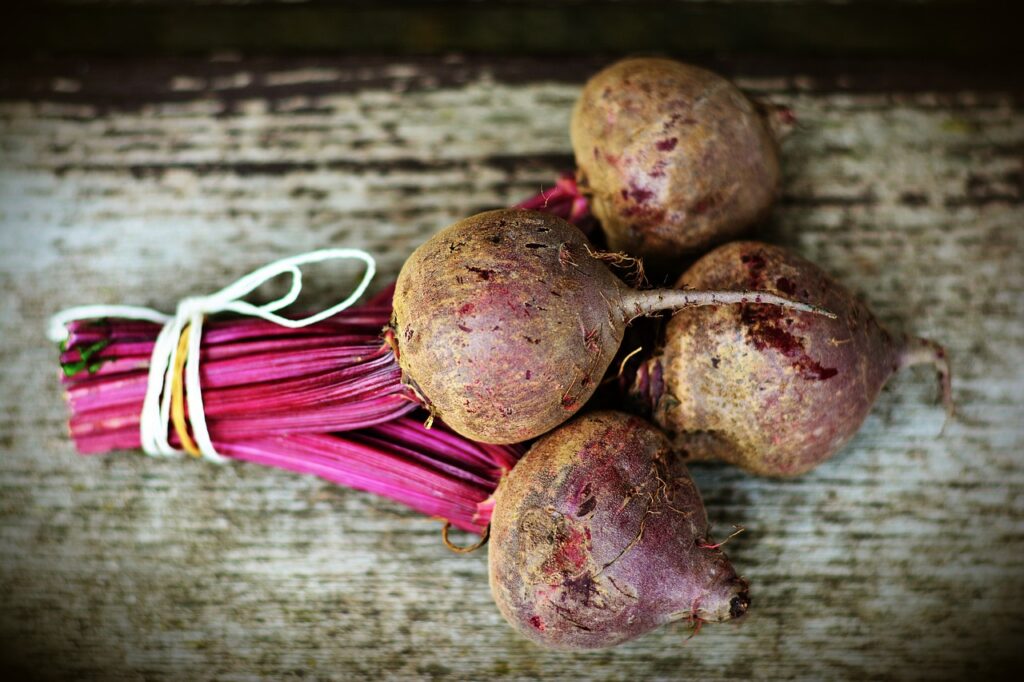
Ideal Growing Conditions
- Well-drained soil
- Soil pH between 6.5-7
- Sunlight require at least 6 hours of sun a day. They can tolerate some shade.
- Optimal temperature can range from 50 to 85 degrees, but they do better between 55 to 70 degrees.
When to plant
- Direct-seeding is the best option for beets.
- For spring harvest,
- Sow beet seeds 3 to 4 weeks before the last frost date which should be around late March to April.
- Be aware to make sure the soil is workable before planting.
- For fall harvest,
- Plant beet seeds 4 to 6 weeks before the first frost which should be mid-summer to early fall.
Planting
- Remember to look at your seed packet to determine the recommended spacing and maturation for your variety.
- To help germination, soak seeds in warm water for 24 hours before planting.
- Sow beet seeds about 1/2 deep. Space seeds 1 to 2 inches apart in rows that are 12 to 18 inches apart.
- Thin seedlings to 3 inches apart.
- Mulch around the beets when they are big enough to retain moisture.
- Water regularly making sure they receive about 1 inch per week.
8. Spinach
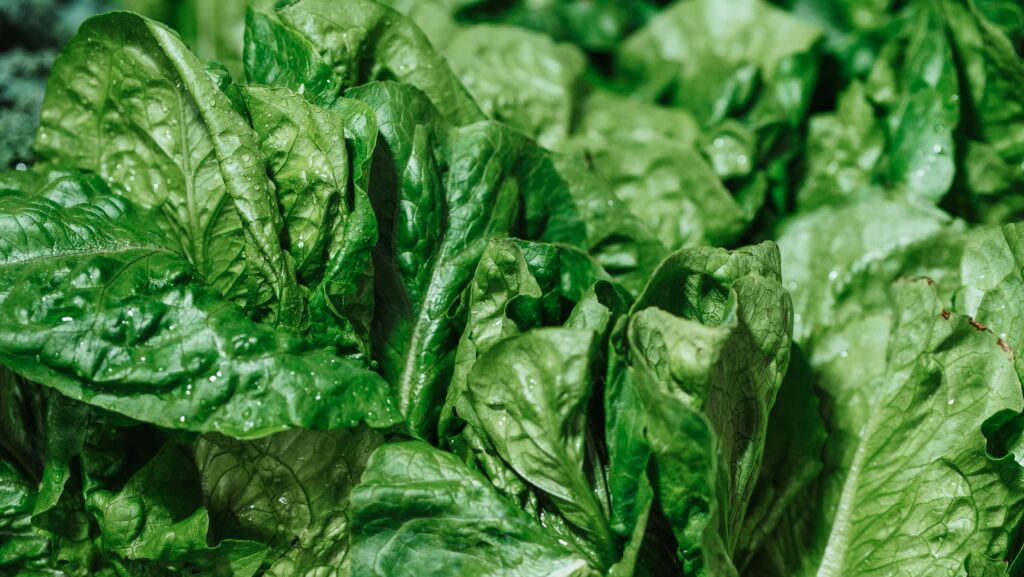
Ideal Growing Conditions
- Well-drained soil
- Soil pH between 6.5-7
- Requires at least 6 hours of sunlight a day, but can tolerate partial shade.
- Best growing temperature is from 45 to 75 degrees F.
When to plant
- Direct-seeding is highly recommended.
- For spring harvest,
- Direct sow spinach seeds 4 to 8 weeks before your last frost in spring.
- Germination is best when soil temperature is between 45 and 68 degrees.
- Direct sow spinach seeds 4 to 8 weeks before your last frost in spring.
- For fall harvest,
- Direct sow 6 to 8 weeks before the first frost.
Planting
- Remember to look at your seed packet to determine the recommended spacing and maturation for your variety.
- Sow spinach seeds 1/2 deep and every 2 to 3 inches planting in rows 12 to 18 inches apart.
- Thin seeds so that each plant is about 6 inches apart.
- Water regularly and mulch.
